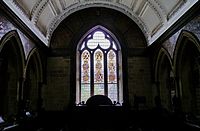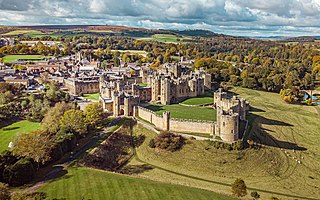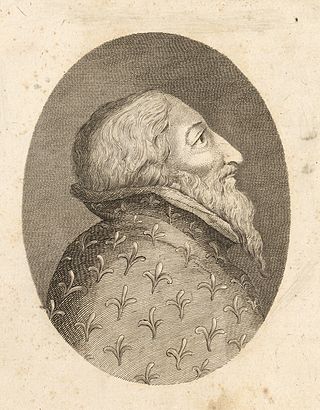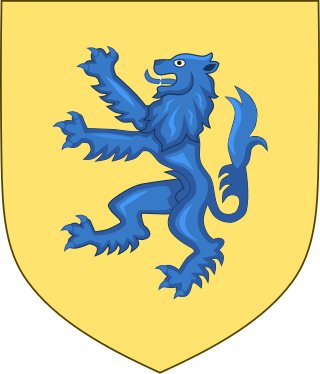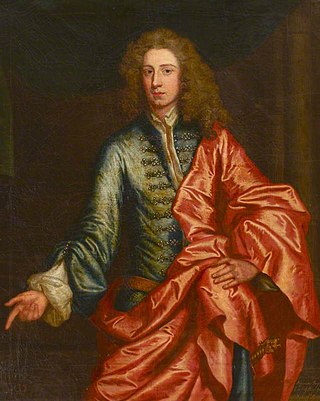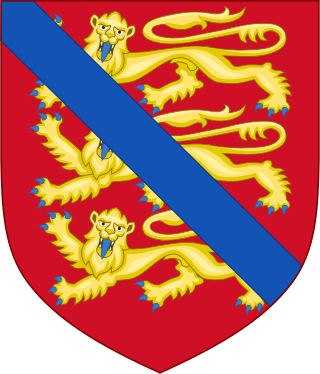| | | | King Henry III
1207–1272 |
|
| | | | | | | |
|
| Baron Percy of Alnwick (2nd creation), 1299 | | | | | |
|
Henry de Percy
1273–1314
8th Baron Percy of Topcliffe, 1st Baron Percy | | Edmund Crouchback
1245–1296
Earl of Leicester, Earl of Lancaster, Earl of Derby |
|
| | | | | | | | |
|
Henry de Percy
1300–1351
9th Baron Percy of Topcliffe, 2nd Baron Percy | | Henry
c. 1281–1345
Earl of Leicester, Earl of Lancaster, Earl of Derby |
|
| | | | | | | | |
|
Henry de Percy
1320–1368
3rd Baron Percy | | Mary of Lancaster
c. 1320–1321–1362 |
| |
| | | | | | | | | |
| | | | | |
| Earl of Northumberland (1st creation), 1377 | | Earl of Worcester |
|
Henry Percy
1341–1408
1st Earl of Northumberland, 4th Baron Percy | | Thomas Percy
1343–1403
Earl of Worcester | | | | | | John of Gaunt
1340–1399
Duke of Lancaster, Earl of Leicester, Earl of Lancaster, Earl of Derby, Earl of Richmond |
|
| (attainted 1405) | | | | | | | | | | | | | | | | | | | |
| | | | | | | | | |
| | | | | | | | | | | | | | | | | | | | | |
|
Henry Percy "Hotspur"
c. 1365–1403 | | | | | | Joan Beaufort
c. 1379–1440 | | | | | | John Beaufort
c. 1370–1410
Earl of Somerset |
|
| | | | | | | | | | | | | | | | | | | | | | | | | | | |
| | | | | | | | | | |
| Earl of Northumberland (2nd creation), 1416 | | | | | | | | | | | | | | | | | | | | | | | | |
|
Henry Percy
1394–1455
2nd Earl of Northumberland | | Eleanor Neville
c. 1398–1472 | | Richard Neville
1400–1460
Earl of Salisbury | | | | | | John Beaufort
1404–1444
1st Duke of Somerset | | Edmund Beaufort
1406–1455
2nd Duke of Somerset |
| |
| | | | | | | | | | | | | | | | | | | | | | | | | | | | |
| | | | | | | | | | | | | | |
| | | | | | | | | Earl of Northumberland (3rd creation), 1464 | | | | | | | | | | |
|
Henry Percy
1421–1461
3rd Earl of Northumberland | | | | | | John Neville
c. 1431–1471
Earl of Northumberland | | Eleanor Beaufort
1431–1501 | | Margaret Beaufort
1443–1509 |
|
| (forfeit 1461) | | | | | | (released 1470) | | | | | | | | | | |
|
| | | | | | | | | | | | | | | | | | | | | |
|
| (restored 1470) | | | | | | | | | | | | | | | | | | |
|
Henry Percy
1449–1489
4th Earl of Northumberland | | | | | | | | | | | | | | | King Henry VII
1457–1509 |
|
| | | | | | | | | | | | | | | | | | | | | | | | | | | |
| | | | | | | | | | | | | | |
Henry Algernon Percy
1478–1527
5th Earl of Northumberland | | Katherine Spencer
1477–1542 | | | | | | | | | | Mary Tudor
(Queen of France)
1496–1533
m.(2) Charles Brandon
Duke of Suffolk | | Margaret Tudor
1489–1541 |
| |
| | | | | | | | | | | Duke of Northumberland (1st creation), 1551 | | | | | | | | | | | | | | |
| | | | | |
Henry Percy
1502–1537
6th Earl of Northumberland | | Thomas Percy
c. 1504–1537 | | John Dudley
1504–1553
1st Duke of Northumberland | | | | | | Frances Brandon
1517–1559
m. Henry Grey
Duke of Suffolk | | James V of Scotland
1512–1542 |
|
| | | | (attainted 1537) | | (extinct 1553) | | | | | | | | | | | | | | |
|
| | | | | | | | | | | | | | | | | | | | | | | | | | | |
| | | | | |
| Earl of Northumberland (2nd creation) restored and Baron Percy of Alnwick (3rd creation), 1557 | | | | | | | | | | | | | | | | | | | | | | | | | |
| | | | | |
Thomas Percy
1528–1572
7th Earl of Northumberland, 1st Baron Percy | | Henry Percy
1532–1585
8th Earl of Northumberland, 2nd Baron Percy | | Guildford Dudley
c. 1535–1554 | | Jane Grey
c. 1537–1554 | | Lady Katherine Grey
1540–1568
m. Edward Seymour
Earl of Hertford | | Mary, Queen of Scots
1542–1587 |
|
| | | | | | | | | | | | | | | | | | | | | | | | | |
|
| | | | Henry Percy
1564–1632
9th Earl of Northumberland, 3rd Baron Percy | | | | | | | | | | Edward Seymour
1561–1612
Viscount Beauchamp | | King James VI and I
1566–1625 |
|
| | | | | | | | | | | | | | | | | | | | | | | | | |
|
| | | | Algernon Percy
1602–1668
10th Earl of Northumberland, 4th Baron Percy | | | | | | | | | | Francis Seymour
c. 1590–1664
Baron Seymour of Trowbridge | | King Charles I
1600–1649 |
|
| | | | | | | | | | | | | | | | | | | | | | | | | |
|
| | | | Josceline Percy
1644–1670
11th Earl of Northumberland, 5th Baron Percy | | | | | | | | | | Charles Seymour
c. 1621–1665
Baron Seymour of Trowbridge | | King Charles II
1630–1685 |
|
| | | | Earldom of Northumberland and Barony Percy extinct, 1670 | | | | | | | | | | | | | | | | | |
|
| | | | | | | | | | | | | | | | | | | | | | | | Earl of Northumberland (4th creation), Viscount Falmouth (1st creation), and Baron of Pontefract, 1674
Duke of Northumberland (2nd creation), 1683 |
| | | | | | | | | | |
| | | | | | | | Elizabeth Seymour
1667–1722 | | Charles Seymour
1662–1748
Duke of Somerset | | | | | | George FitzRoy
1665–1716
Duke of Northumberland, Earl of Northumberland, Viscount Falmouth, Baron of Pontefract |
| |
| | | | | | | | | | | | | | | | | | | | | | Earldom of Northumberland and Dukedom of Northumberland extinct, 1716 |
| | | |
| | | | | | | | Baron Percy (4th creation) created erroneously, 1722
Earl of Northumberland (5th creation) and Baron Warkworth, 1749 |
|
| | | | | | | | Algernon Seymour
1684–1750
Duke of Somerset, 1st Earl of Northumberland and Baron Warkworth, 1st Baron Percy |
|
Duke of Northumberland (3rd creation), 1766
Lord Lovaine, Baron of Alnwick in the County of Northumberland | | | | | | | | | |
|
Hugh Percy formerly Hugh Smithson
1714–1786
1st Duke of Northumberland, 2nd Earl of Northumberland and Baron Warkworth, 1st Baron Lovaine, 4th Baronet Smithson | | | | | | Elizabeth Seymour
1716–1776
2nd Baroness Percy suo jure |
| | | | | |
| | | | | | | | | | | | | | | | | |
| | | | | | | | | | | | | |
| | | | | | | | | | | | | Earl of Beverley , 1790 |
|
Hugh Percy
1742–1817
2nd Duke of Northumberland, 3rd Earl of Northumberland and Baron Warkworth, 3rd Baron Percy | | | | | | | | | | Algernon Percy
1750–1830
1st Earl of Beverley, 2nd Baron Lovaine |
|
| | | | | | | | | | | | | | | | | |
| | | | | | | | | |
| | | | | | | | | | Baron Prudhoe, of Prudhoe Castle in the County of Northumberland, 1814 | | | | | |
|
Hugh Percy
1785–1847
3rd Duke of Northumberland, 4th Earl of Northumberland and Baron Warkworth, 4th Baron Percy | | Emily Frances Percy
1789–1844 | | Algernon Percy
1792–1865
4th Duke of Northumberland, 5th Earl of Northumberland and Baron Warkworth, 1st Baron Prudhoe, 5th Baron Percy | | George Percy
1778–1867
5th Duke of Northumberland, 6th Earl of Northumberland and Baron Warkworth, 2nd Earl of Beverley, 3rd Baron Lovaine |
|
| | | | | | | | | Barony Prudhoe extinct, 1865 | | | | | |
|
| | | | George Augustus Frederick John Murray
1814–1864
6th Duke of Atholl, 11th Baron Strange | | | | | | Algernon George Percy
1810–1899
6th Duke of Northumberland, 7th Earl of Northumberland and Baron Warkworth, 3rd Earl of Beverley, 4th Baron Lovaine |
|
| | | | | | | | | | | | | | | | |
|
| | | | John James Hugh Henry Stewart-Murray
1840–1917
7th Duke of Atholl, 12th Baron Strange, 6th Baron Percy | | | | | | Henry George Percy
1846–1918
7th Duke of Northumberland, 8th Earl of Northumberland and Baron Warkworth, 4th Earl of Beverley, 5th Baron Lovaine |
|
| | | | | | | | | | | | | | | | | |
| | | | |
| | | | John George Stewart-Murray
1871–1942
8th Duke of Atholl, 13th Baron Strange, 7th Baron Percy | | James Thomas Stewart-Murray
1879–1957
9th Duke of Atholl, 14th Baron Strange, 8th Baron Percy | | Alan Ian Percy
1880–1930
8th Duke of Northumberland, 9th Earl of Northumberland and Baron Warkworth, 5th Earl of Beverley, 6th Baron Lovaine |
|
| | | | | | | | | | | | | | | | | | | | |
| | | | |
| | | | | | | | | | | | Henry George Alan Percy
1912–1940
9th Duke of Northumberland, 10th Earl of Northumberland and Baron Warkworth, 6th Earl of Beverley, 7th Baron Lovaine | | Hugh Algernon Percy
1914–1988
10th Duke of Northumberland, 11th Earl of Northumberland and Baron Warkworth, 7th Earl of Beverley, 8th Baron Lovaine, 9th Baron Percy |
|
| | | | | | | | | | | | | | | | | | | | | | | | |
| | | | |
| | | | | | | | | | | | | | | | Henry Alan Walter Richard Percy
1953–1995
11th Duke of Northumberland, 12th Earl of Northumberland and Baron Warkworth, 8th Earl of Beverley, 9th Baron Lovaine, 10th Baron Percy | | Ralph George Algernon Percy
b. 1956
12th Duke of Northumberland, 13th Earl of Northumberland and Baron Warkworth, 9th Earl of Beverley, 10th Baron Lovaine, 11th Baron Percy |
|
| | | | | | | | | | | | | | | | | | | | | | | |
|
| | | | | | | | | | | | | | | | | | | | George Dominic Percy
b. 1984
styled Earl Percy |
|
| | | | | | | | | | | | | | | | | | | | Heir apparent to the Dukedom of Northumberland |
|



